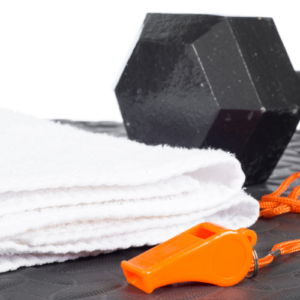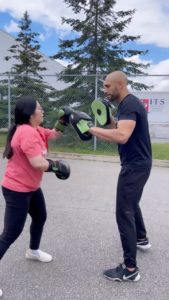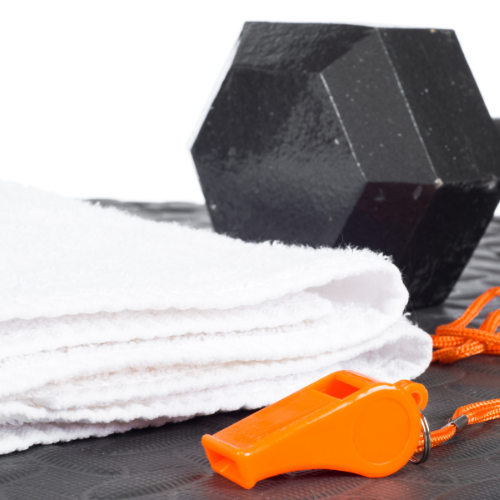
Strength and conditioning is, in its simplest sense, the application of the latest research to athletic performance. While the idea of strength and conditioning training might bring to mind Olympic athletes or NFL players, in reality, these programs offer opportunities for nearly anyone. We all aspire to better physical performance. Strength and conditioning is how we get there.
Strength and conditioning asks; How can I most efficiently get from A to B?
A is me now, and B is my performance goal.
Strength and conditioning always has a performance goal. The key distinction is performance. With strength and conditioning, we’re trying to run faster, play better, and lift more. To be better at something.
Strength and conditioning programs are usually highly personalized. A specific program might be long duration or short sprint format. It could be high-intensity or endurance-focused. It could be designed for a specific activity, or even for a specific athlete.
We’re about to break down the essential elements that differentiate strength and conditioning programs. We’ll discuss what makes a good strength and conditioning workout; some good, broad-application strength and conditioning exercises; and, most importantly, we’ll talk about what makes the best strength and conditioning program for you.
Here we go!
Time
So you’ve decided to start training. Maybe you have an event to prepare for. Maybe you have a personal goal or a New Year’s resolution. Maybe you’re an athlete looking to optimize performance. Or, maybe you just want to get in shape and live well. To find the right program the first consideration is time.
Ask yourself; How much time can I realistically dedicate to this and when will that be?
We all have busy schedules. It’s easy to push physical health into the background as daily demands force themselves into the foreground.
Set out your training schedule at the beginning of every week.
Write down exactly how much time you’ll spend training and when. Can you wake up and work out first thing? Do you set aside a dedicated half hour, hour or more after work?
Do what makes sense for you. But think about it. Plan it. And WRITE IT DOWN.
Exercises/Drills
Strength and conditioning is about strengthening muscles, building cardiovascular health, and increasing flexibility. How are you going to do that? What exercises will do that for you?
Even if you have super general goals, it’s good to think about how you’re going to get there. This will help refine and specify goals. Every personal trainer will begin by asking about your goals. But let’s not jump ahead. More on personal trainers later. First exercises and drills.
Cardio–The most basic building block of your strength and conditioning program is cardio exercise. Your ability to maintain any activity depends on the cardio system’s ability to supply your body with energy. Cardio means sprints, bike sprints, rowing, stairs or really any rapid and repeated whole body movement. A 30-minute session at least three times is the minimum.
Squats–the essential lower body exercise. Body weight is fine but adding various weights can help personalize the exercise and maximize progress towards your goal/s.
Push-ups and Chin-ups–the dollars and cents of strength training. These two age-old movements are the essence of upper body strength.
Exercises differ according to specific goals. A fighter might want to train for explosive motion. A distance runner will focus on cardiovascular endurance. A gymnast’s program stresses flexibility. Based on your goals, your program will add goal-specific exercises. Learn as you go. Take notes on your experience and develop your routine according to the feedback.
Your program will develop but the essentials are the starting point.
Equipment
Gym or home?
As always it depends on the context and the individual. The gym will have more equipment. More equipment means more specificity. More specificity contributes to efficient progress towards your goal.
Having said that, the essential elements are always present. If you want to increase cardio there are multiple at-home exercises. If you want more core strength, body weight exercises are sufficient. Sprint formats and specific muscle focus are effective if you’re looking for more explosive energy.
Body weight is always the weight we’re training to wield. You can practice wielding it anytime and anywhere. Equipment just adds a lot of efficiency and specificity.
Using a Personal Trainer
A personal trainer is the best way to specify and maximize. We already know that strength and conditioning training benefits disproportionately from personalization. Both in terms of the specific goal and in terms of the individual trainee. A personal trainer will bring experience to bear on your specific situation, your body type, your age, and your goals.
A trainer will take care of program planning so that when you get to the gym it’s all focused on the workout and no time planning what to do next.
You certainly don’t need a personal trainer, but having one can help take away some of the uncertainty around planning. It can also speed up your progress.
Key Takeaways
First, strength and conditioning training is something nearly everyone should consider. A healthy body is linked to a healthy mind. A strong and fit body is linked to health and longevity. Training for physical strength and endurance isn’t just for athletes. We all benefit from pushing ourselves physically.
Second, this type of training is goal oriented. So if you’re starting a strength and conditioning program, have some specific goals. Goals will allow you to measure progress. Measurable progress will motivate you to train harder and train regularly.
Third, and last, strength and conditioning benefits from customization. The closer you can adapt your program to your strengths and weaknesses the better you’ll be able to reach your goals. Personalizing your workout with the right exercises and the right drill will help you see more progress faster. This is where equipment and a personal trainer come in. Although certainly not necessary (don’t put off training just because you don’t have access to a gym or a trainer) they are great ways to optimize your workout.
That’s all for now of strength and conditioning.
Now go and Get. After. It.

